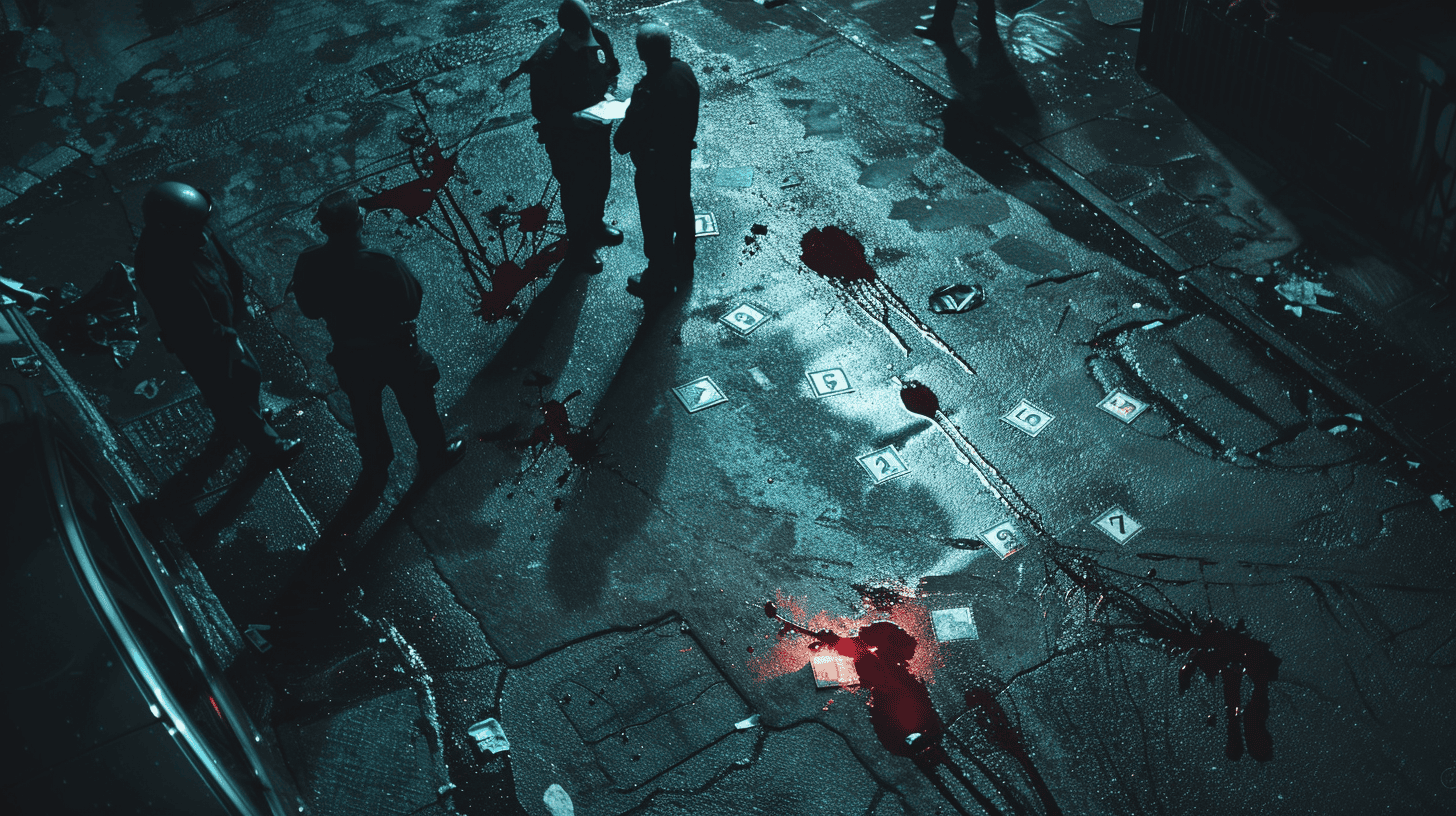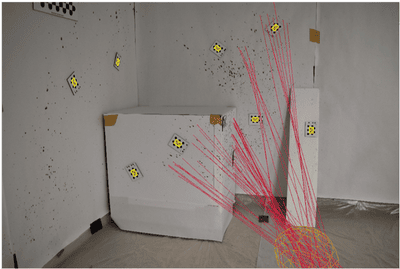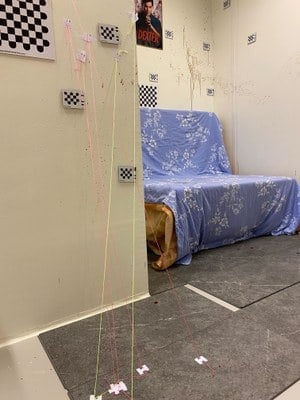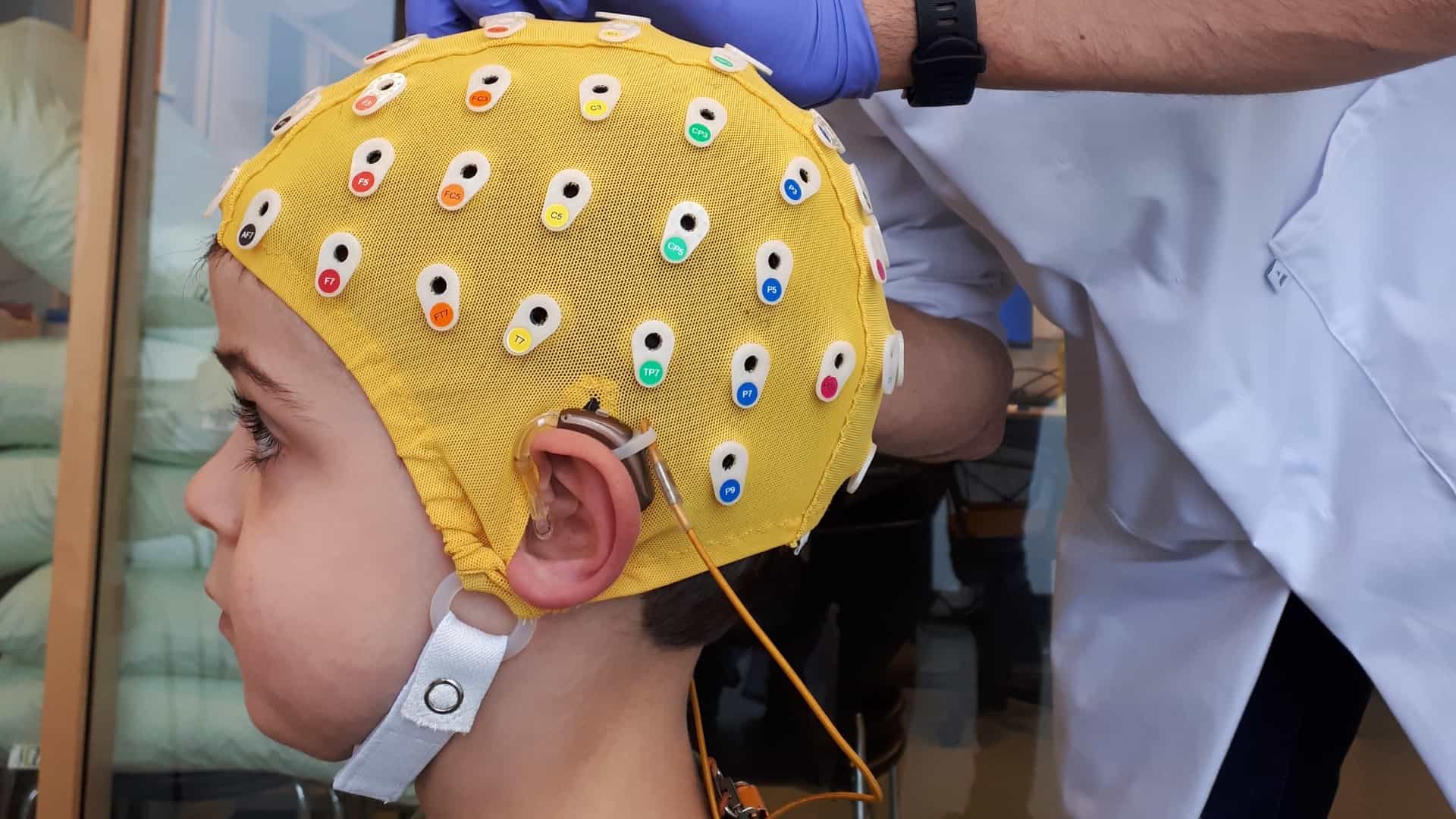
Investigating crime scenes is essential for police services to determine exactly what happened. Unfortunately, this often involves manual work that takes a lot of time. KU Leuven has developed a new tool called ‘HemoVision’ that, using smart algorithms, can analyze a blood spatter pattern in less than fifteen minutes and display the possible impact on the victim in 3D. Thanks to the expertise and collaboration with the Federal Judicial Police, the technology could be optimized and tested on real crime scenes.
During a crime, blood spatters may end up in the surroundings. By analyzing this spatter pattern, detectives can determine exactly what happened. Unfortunately, these analyses are particularly time-consuming and not always easy to perform. When using HemoVision, it’s enough to upload photos, and in less than fifteen minutes, the tool provides accurate 3D visualizations of the potential impact on the victim.

“With the help of smart algorithms, we trained our tool to generate various impact possibilities based on a particular blood spatter pattern. Detectives can use these to test and, if necessary, exclude their various hypotheses. With the expertise of the UZ Leuven Department of Forensic Medicine and through collaboration with the Federal Judicial Police, we were able to test HemoVision on real crime scenes and adapt it to the needs of future users,” explains researcher Philip Joris from KU Leuven and founder of Forentrics, the spinoff behind HemoVision. “The advantage of HemoVision is that the tool works quickly and very accurately. This saves detectives a tremendous amount of time and effort”, adds cofounder Ruben Moermans.
“Innovation has always been part of the DNA of the Federal Judicial Police,” explains Laurent Blondiau, Acting General Director of the Federal Judicial Police (DGJ). “Nevertheless, the need was felt a few years ago to further structure our approach. One of the ways we have adopted to make the Federal Judicial Police a true player in innovation is through structural cooperation between our departments and the academic world. This collaboration with KU Leuven is a remarkable example.”

“We are very pleased to have contributed to the development of HemoVision. It will be a plus for the Belgian and international police forces but also for society as a whole. The software will save considerable time for the entire judicial chain. Moreover, it is very visual and will facilitate the understanding of the facts during court hearings. It is currently used in parallel with our usual methods,” says Sabien Gauquie, director of the Technical and Scientific Police Directorate (DJT).
The researchers at KU Leuven are not limiting themselves to Belgian police services but also hope to convince various international players to use HemoVision. “Thanks to €50,000 in startup support from VLAIO, financial support from the KU Leuven research group on Image and Speech Processing, and expert advice from KU Leuven Research &Development and the UZ Leuven Department of Forensic Medicine, we can professionally market ourselves as a spinoff,” says Philip Joris.







